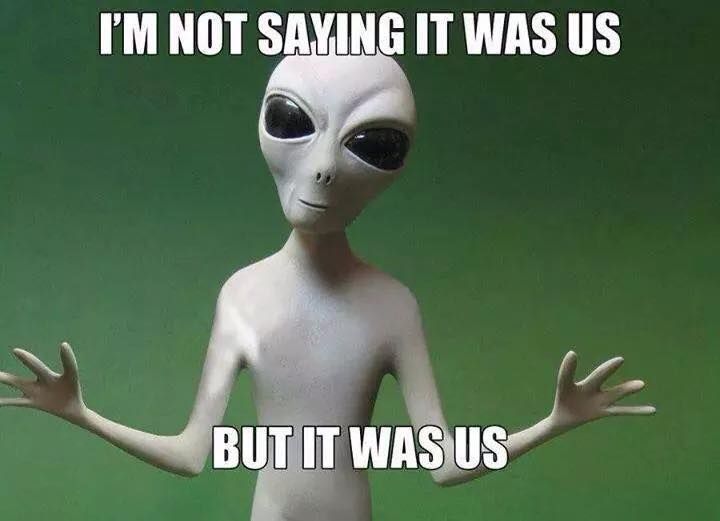It’s all about the spatial science techniques (in this case radar/satellite data) we use to filter out noise so we can identify objects in space (the abstract space, not outer space).

13 February 2023 (Brussels, Belgium) — Ok, a short note on why all these UFOs are popping up right now. Over the weekend the North American Aerospace Defense Command (NORAD) gave a briefing. NORAD is a combined organization of the United States and Canada that provides aerospace warning, air sovereignty, and protection for Canada and the continental United States.
The following are just a few points from a very lengthy briefing, plus my own chats with members of my military intelligence circle.
With a special 🎩 tip to Rebekah Jones, a data scientist who was also on the briefing call, who is an expert in geographical changes and landscape changes using satellite imagery and other geodata layers. The tennis ball/beach analogy I use below she used on her blog. Rebekah has a rather colorful background. It is spatial scientists who are using satellite technology to detect and track the genocide of Ukrainians by Russian forces.
The NORAD briefing …
As Rebekah points out, in spatial science (in this case radar/satellite data), we use techniques to filter out noise so we can identify objects in space (the abstract space, not outer space). Think of it like trying to find a tennis ball on the beach using a 3D scan of the beach read as lines of text. You know how big the tennis ball is, so you take all the data from the beach and tell the computer to find a round object that is the approximate size of a tennis ball. It would take a lot longer to find the tennis ball if every small object on the beach had to be reviewed one-by-one. So in effect, we tell the computer to ignore everything that doesn’t look like a tennis ball.
The same goes with detecting aircraft. NORAD knows what the range and sizes of aircraft typically are, and they know how they move across space. So they filter out tiny objects that aren’t large enough to be typical aircraft and/or are stationary. That allows them to readily find objects that fit the parameters they set for things like “adversarial” spy planes, drones and other “attack objects”.
When all of these “balloon things” happened, NORAD had previously reduced the filter sensitivity to allow smaller objects to pass through. You do not want to be picking up flocks of birds, swarms of insects, an ash cloud, boatloads of people releasing helium balloons at the same time in the same location – lots of other stuff. Too much noise delays response to the specific types of aircraft they are looking for.
Now, NORAD is picking up these small, slow-moving objects that had been filtered out before. This was due to a White House and Pentagon decision awhile ago to change the filter level. The actual timing of that decision is unknown. Many of my military intel members indicated the Chinese balloons were probably known/detected/tracked/neutered well before they became public knowledge.
So back to the beach analogy. If we fine-tune our filters, we’ll start picking up sea shells, coins, lost rings, etc.
What these objects are – and from what nation or entity – the Pentagon is not saying. But my intelligence sources say that is easy to determine, and we should ignore the “we do not know” response from the Pentagon press spokesman. At this point the Pentagon is simply tagging them as “unidentified flying objects” (UFOs). And these were not necessarily recently launched objects. It’s just they were not in our “sights”. Now they are. And we’re finding there are quite a few of them up there.
One intelligence source told me the U.S. military used this type of “noise” filtering in the 1980s in radio direction finding to filter out Soviet signals that were the same but merely bouncing from/off different locations. In the 1980s we also used special distributed algorithms to filter out signal directions that didn’t fit the norm. Today we use the same process (but obviously much more sophisticated) for radar and other sensor technology.
And now NORAD has advised that while they typically ignored ~98%~ of the data their sensors picked-up because it was deemed not relevant – or just too much for humans to keep up – they are now using artificial intelligence to sift through all that previously discarded (but saved) data.
NOTE TO READERS: when I was in the U.S. this past December I had the opportunity to attend a media briefing on the newest version of GIDE (Global Information Dominance Experiment). GIDE is part of a larger, long-term Pentagon project that pools (almost) all collected intelligence data from multiple sources to automate data sharing across military branches and intelligence agencies, using artificial intelligence for first-pass analysis. It’s sort of a “Hey, look, you humans!! I’ve found transports being loaded in Chinese seaports close to Taiwan, and North Korean missiles being rolled out of their caves and fueled for launch, and a stream of hate-filled Tweets stirring up mobs to storm an embassy”. That kind of thing. The point is not only do you spare “the humans” hours of poring over satellite images, radar returns, text streams and social media posts, but you actually give them time to think. When my schedule lightens up, I’ll write more about GIDE. It is a fascinating blend of artificial intelligence, human intel, network data intelligence management and telecommunication, and the major issue of addressing the exponential increases in IP traffic, methods of access, types of activity and volume of content.
As far as NORAD’s new discoveries, I’m quite curious to see what they’ve found as far as origin and purpose through their recovery of these things they are shooting down. That will be the real interesting, and challenging, analysis. The Pentagon has been very coy on what has/has not been recovered.